Traditional Japanese crafts are deeply ingrained in the country’s culture and history.
Over centuries, artisans have honed their skills to produce various objects of beauty, functionality, and cultural significance.

From delicate pottery to intricate textiles and papermaking traditions that go back over 1,000 years, here are 11 traditional Japanese crafts.
Table of Contents
1. Kintsugi
Kintsugi is a traditional Japanese crafting technique that uses lacquer and gold to mend broken pottery.
The art of Kintsugi believes in embracing flaws instead of hiding them, making the final piece more beautiful than before it was damaged.
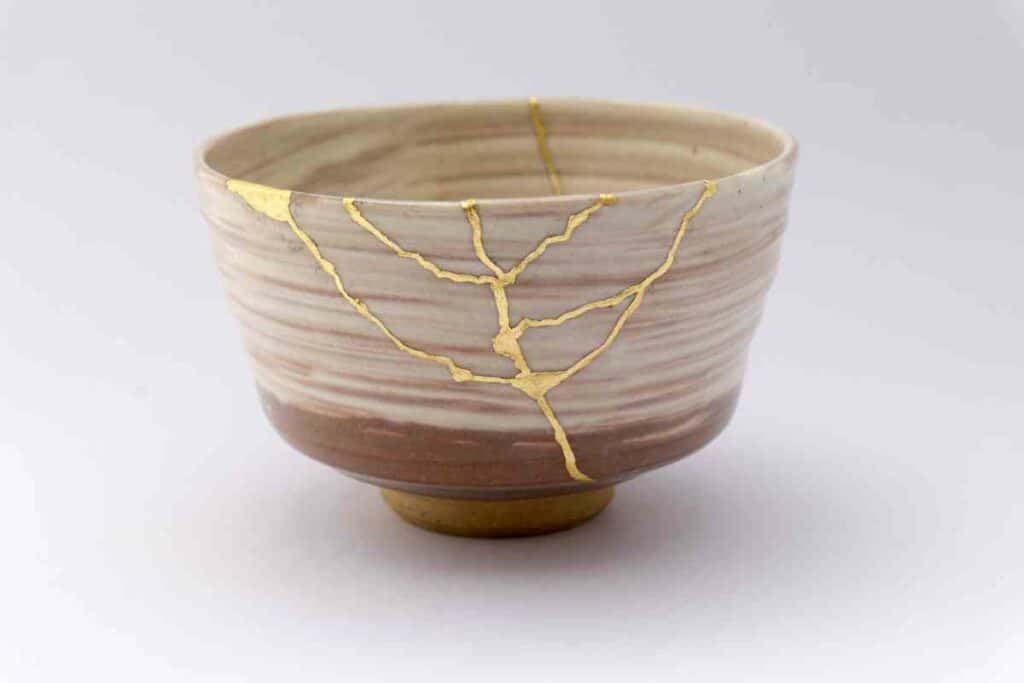
This philosophy can be related to life lessons where every scar or pain has the power to enrich our lives.
The process starts by carefully picking up shattered pieces and sticking them back together with a special glue called urushi which comes from a sap extracted from the Asian sumac tree.
After gluing all pieces together, they cover the seams with layer after layer of fine-grain gold dust adding unique patterns that give new character and honor imperfections.
2. Shibori
Shibori is a traditional Japanese dyeing technique that involves:
- Folding
- Twisting
- Binding fabric to create intricate patterns
This craft dates back as far as the 8th century in Japan, where it was originally developed for decorating textiles such as linen and silk.
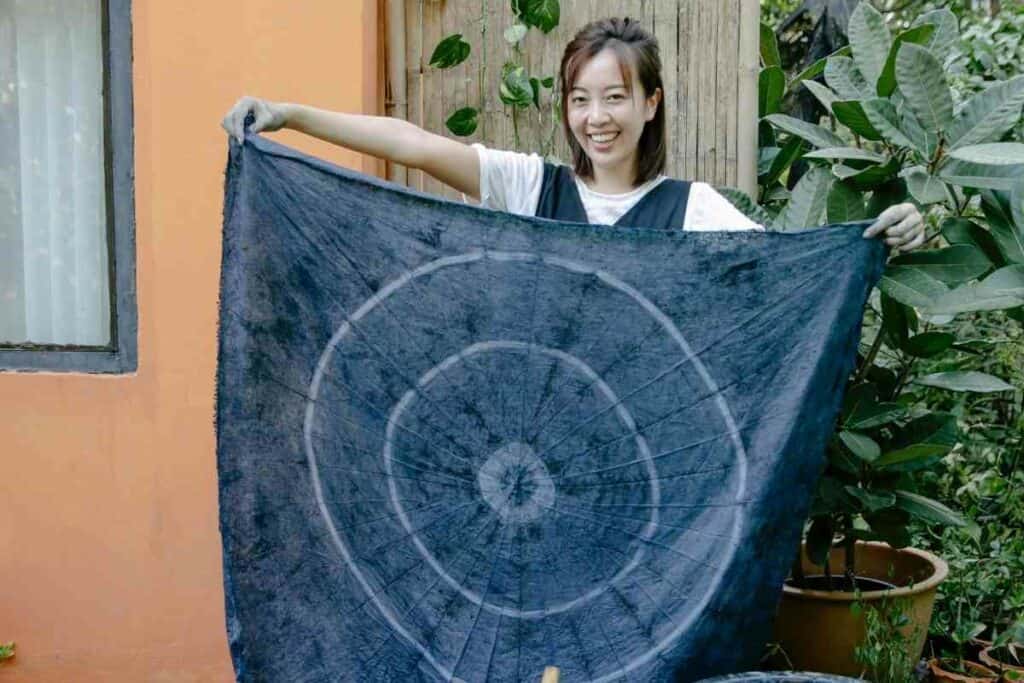
There are several different shibori techniques including:
- Kanoko Shibori which uses small knots throughout the fabric to create a dotted pattern
- Arashi Shibori which creates diagonal stripes by wrapping cloth around poles before dying them
- and Kumo Shibori which produces a spider web effect
Each method has its own unique aesthetic appeal.
Shibori’s popularity continues today among artists worldwide due to its versatile nature with almost limitless possibilities of designs with many color combinations available through modern-day chemistry creating various dyes ranging from classic indigo hues up until masterful color tones.
Overall Shibori remains an integral part of contemporary art but also plays an intrinsic role within Japanese traditions; this ancient textile art keeps evolving across generations seeking harmony between textures & aesthetics designing pieces full of beauty and natural flow.
3. Sashiko
Sashiko is a traditional form of decorative stitching from Japan that has been around for centuries.
It originated as a way to strengthen and repair clothes, but over time it evolved into an art form in its own right.
The word “sashiko” literally means “little stabs,” which refers to the small stitches used in this technique.
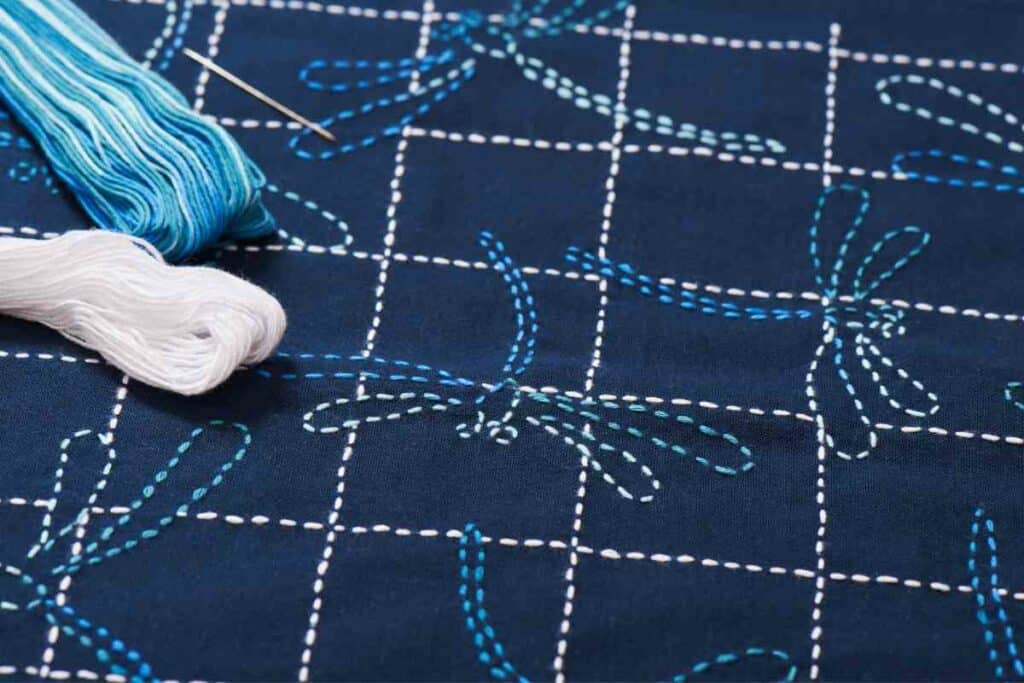
Sashiko can be done by hand or with a sewing machine and involves creating intricate designs using white thread on indigo-blue fabric. The most common pattern is called “Asano-ha” or hemp leaf, but there are many other patterns too.
Sashiko was traditionally used for work clothes like boro (patched) garments worn by farmers during the Edo period; however now it is often seen as beautiful pieces made to decorate modern homes through tablecloths, noren(Japanese doorway curtains), wallets among others.
Today, sashiko continues to be practiced and appreciated not just within Japan but all over the world due to its unique aesthetic appeal that combines simplicity with elegance.
4. Yuzen
Yuzen is a traditional Japanese dyeing technique that has its roots in Kyoto during the Edo period.
This craft involves hand-painting delicate designs onto silk fabric using rice paste and natural dyes.
The result is an intricate pattern with bold colors and sharp outlines.
To create Yuzen, artisans use a special brush to apply the rice paste resist onto the silk fabric, then paint over it with natural dye pigments to achieve their desired color palette.
Once dry, the piece is rinsed in water which washes away all of the resist material leaving behind only vividly colored areas where a pigment was applied directly to the cloth.
One unique aspect of the Yuzen technique is stenciling for outlining details as they cover such extensive surface area through embroidery and sashes thus delivering detailed patterns evolving into pieces like kimonos or art frames.
In today’s age, there’s continued interest globally; from modern uses on scarfs t-shirts, etc, to those attached personally for custom-fit garments for specific occasions.
5. Kutai-yaki
Kutai-yaki is a type of traditional Japanese pottery that has been produced for over 150 years in the Kutani region. This area is located in Ishikawa Prefecture, and it is known for its high-quality ceramics.
Kutai-yaki typically features vibrant colors such as:
- Deep red
- Blue
- Gold
- Greens
- Black
It often showcases intricate designs ranging from floral motifs to abstract patterns that are inspired by nature.
One technique used to create Kutai-yaki involves applying many layers of colored glaze onto the ceramics before they are fired at high temperatures.
Another method includes using gold or silver dust on top of the colored glaze which gives them a unique shine and glossy finish that makes these pieces very popular among collectors around Japan.
Overall The beauty & style associated with Kutani ware make them collectible artifacts throughout East Asia but also worldwide.
6. Mingei
Mingei is a term that refers to traditional Japanese crafts, which are carefully handmade by skilled artisans using centuries-old techniques.
These crafts include:
- Pottery
- Textiles
- Lacquerware
- Metalwork
- Woodwork
Mingei reflects the simplicity of Japanese aesthetics where beauty is found in the natural and functional.
The philosophy behind Mingei emphasizes harmony between people and objects through an appreciation for their inherent qualities.
One of the most famous figures associated with Mingei is Soetsu Yanagi who founded it as a cultural movement in Japan during the 1920s along with potters Shoji Hamada and Kanjiro Kawai.
They gained international recognition after exhibiting at New York’s Museum of Modern Art “The Unknown Craftsman” exhibition organized by Yanagi himself.
Today, Mingei continues to be popular among collectors due to its unique charm while preserving culture through artisanal approaches that have been passed down from generation to generation all over Japan.
All of this despite the rapid industrialization stretching back decades ago up until today’s modern era—where craftsmanship still holds great importance despite automation efficiencies offered by machinery!
7. Washi
Washi is a traditional handmade paper that originated in Japan.
It’s commonly used for various things such as:
- Bookbinding
- Lampshades
- Origami crafts
The making of washi involves the use of natural fibers extracted from plants like bamboo or bark fibers which are then beaten to produce pulp before it’s dried into sheets.
The unique quality of Washi lies in its durability and strength despite being lightweight; giving birth to many uses including boxes, envelopes, or even flooring materials.
Washi has long been embraced by Japanese culture due to its versatility especially when crafted alongside other traditional skills such as calligraphy.
Moreover, there are distinct regional styles across Japan producing variations called Echizen Warshi made near Fukui City with a history stretching back over 300 years old.
8. Urushi
Urushi is a traditional Japanese craft that has been around for over 9,000 years.
It involves using natural lacquer to create decorative and functional objects such as bowls, boxes, and jewelry.
Urushi can take up to several months or even years to complete due to the time-consuming process of applying multiple layers of lacquer coating onto each piece.
The raw material used in urushi is extracted from the sap of a specific tree species native only to Japan called “urushinoki.”
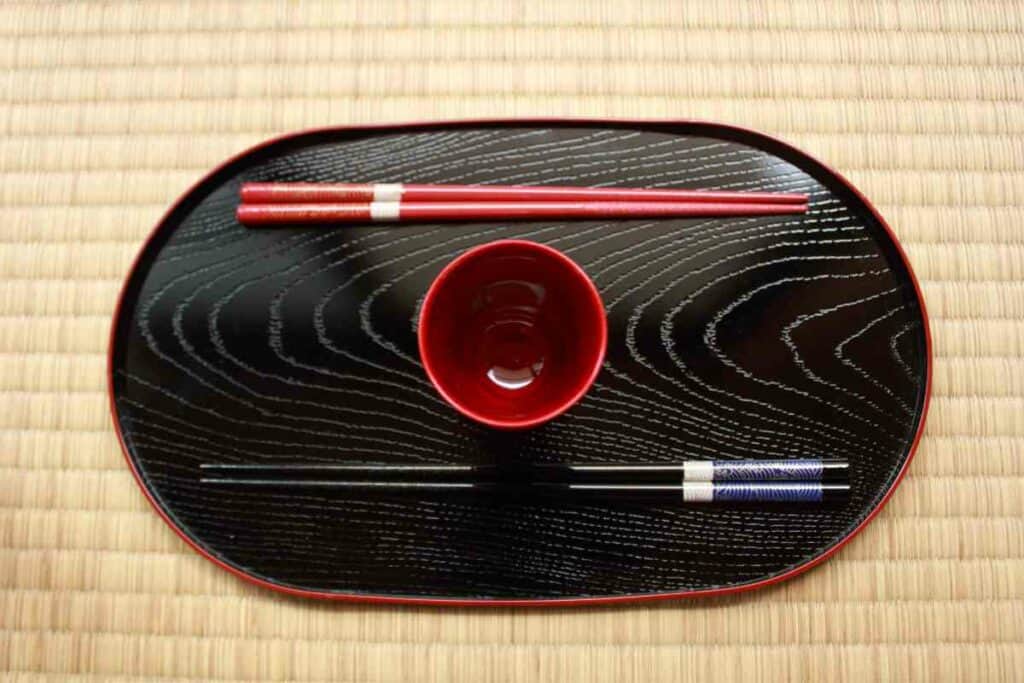
The sap undergoes extensive processing which removes impurities before application on selected surfaces.
Urushi craftsmen are highly skilled individuals who undertake rigorous training under harsh apprenticeships lasting upwards of five or more years before becoming master artisans themselves.
We are talking about master knowledge passed down through generations thus preserving an ancient tradition handed down by their formidable ancestors who lived centuries ago.
9. Nihonga
Nihonga is a traditional Japanese painting technique that has been passed down through generations.
It utilizes natural and mineral pigments on washi paper or silk, creating unique textures and vivid colors.
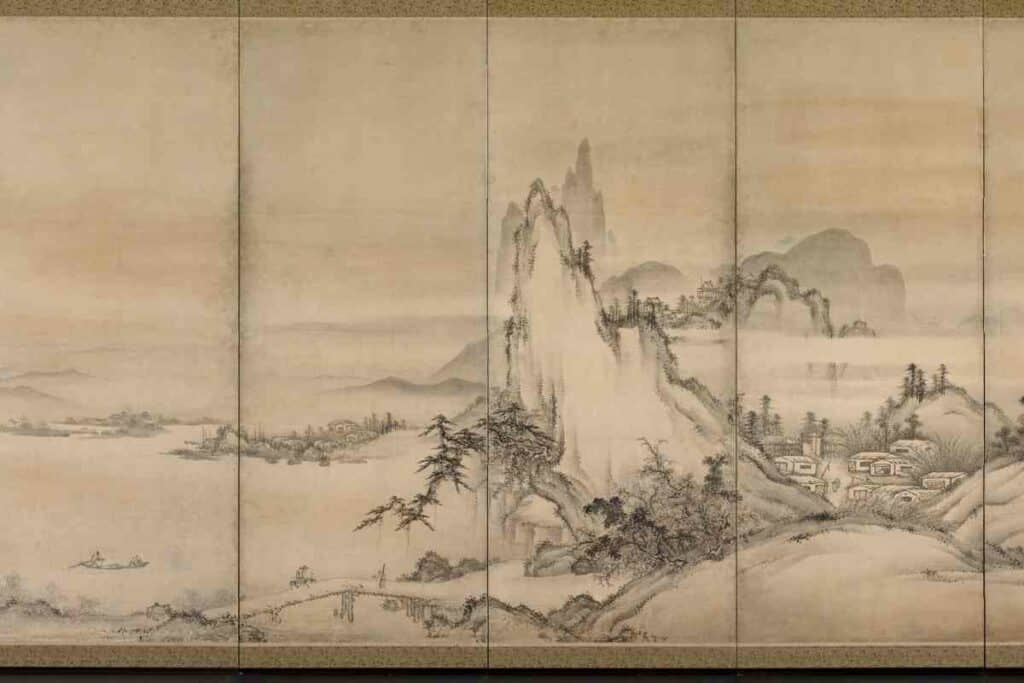
The themes of Nihonga are often inspired by:
- Nature
- Folklore
- Mythology
- Religious beliefs
Nihonga paintings reflect the essence of Japan’s cultural history with their attention to detail while showcasing quality craftsmanship using high-quality materials allowing them to stand out in today’s modern art world where mass production dominates.
While this method may seem limited due to a lack of available resources needed for it, it makes it an authentic one-of-a-kind treasure impossible to replicate elsewhere unlike many present-day paintings born through computerized methods.
10. Edo Kiriko
Edo Kiriko is a Japanese craft that involves cutting and etching patterns on glass vessels.
This technique originated in Edo (now Tokyo) during the 1800s, and it requires skillful hands to produce delicate designs.
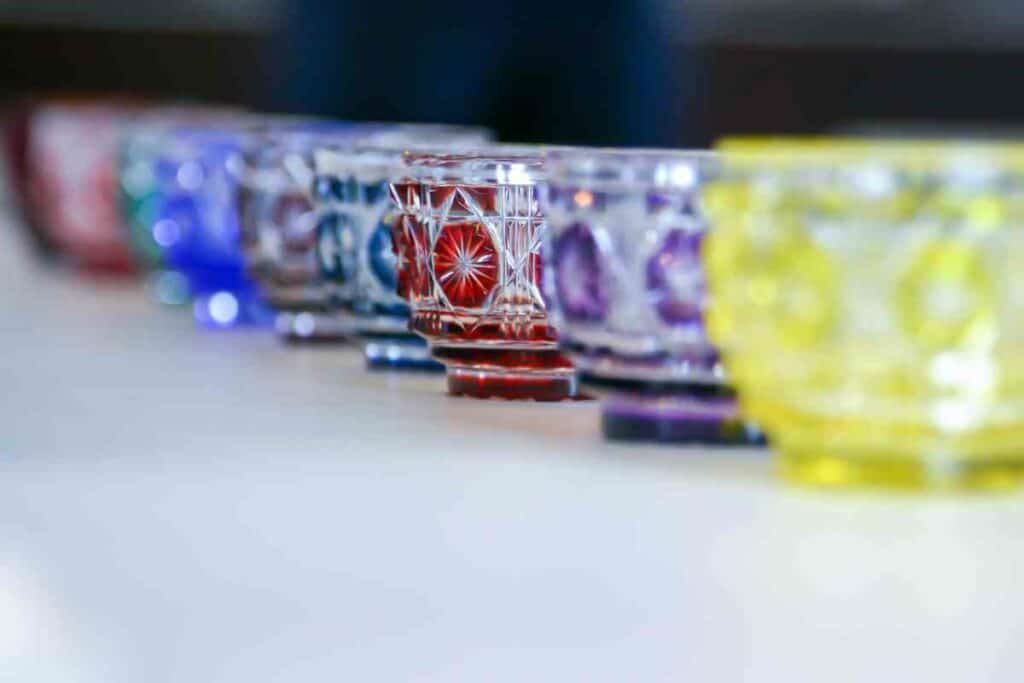
The intricate cuts give each piece its unique appearance as light refracts off the facets of the crystal-clear surface.
Take a look – Edo Kiriko Whiskey Glasses
Traditionally, artisans would use copper or metal wheels to carve out geometric shapes like diamonds, squares, and triangles from the molten glass before cooling them rapidly with water to create ridges around those carvings for decorative effect.
These days though – machinery does most of this work leaving only more specialized patterning techniques such as sandblasting left up talented craftsmen.
11. Bonsai
Bonsai is a traditional Japanese art form, which involves the cultivation of miniature trees in pots that are aesthetically pleasing to the eye.
In essence, bonsai means “planting in a tray” or “tray planting”. It is said to have its roots derived from ancient Chinese horticultural practices and was later popularized by Buddhist monks as they traveled across Japan.
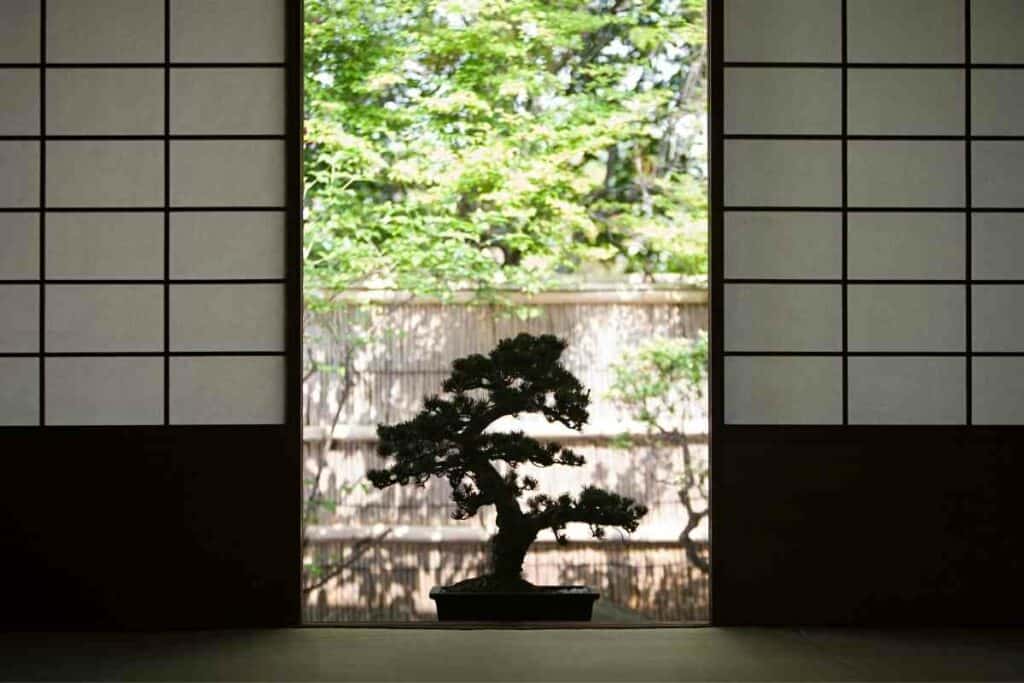
Creating a beautiful bonsai tree requires patience, skill, and knowledge of various techniques including pruning branches regularly so that it grows into their desired shape.
Bonsais can take years – even decades!-to grow fully matured but once achieved offer immense satisfaction for both creator & admirer alike!
A true lover of this craft would know how important each detail has been carefully taken care of; everything thought out meticulously – from soil composition through fertilization.
Each step adds up elementally towards creating an inspiring work-of-art small enough to fit inside your home yet carries with itself a century-old tradition coveted by craftsmen worldwide.
In Conclusion
Traditional Japanese crafts are an essential part of Japan’s cultural heritage.
These ancient and modern crafts offer a glimpse into the rich history and traditions of this vibrant country.
Each craft has its unique story, meaning, and symbolism that make it even more valuable for visitors looking to learn about Japanese culture.



